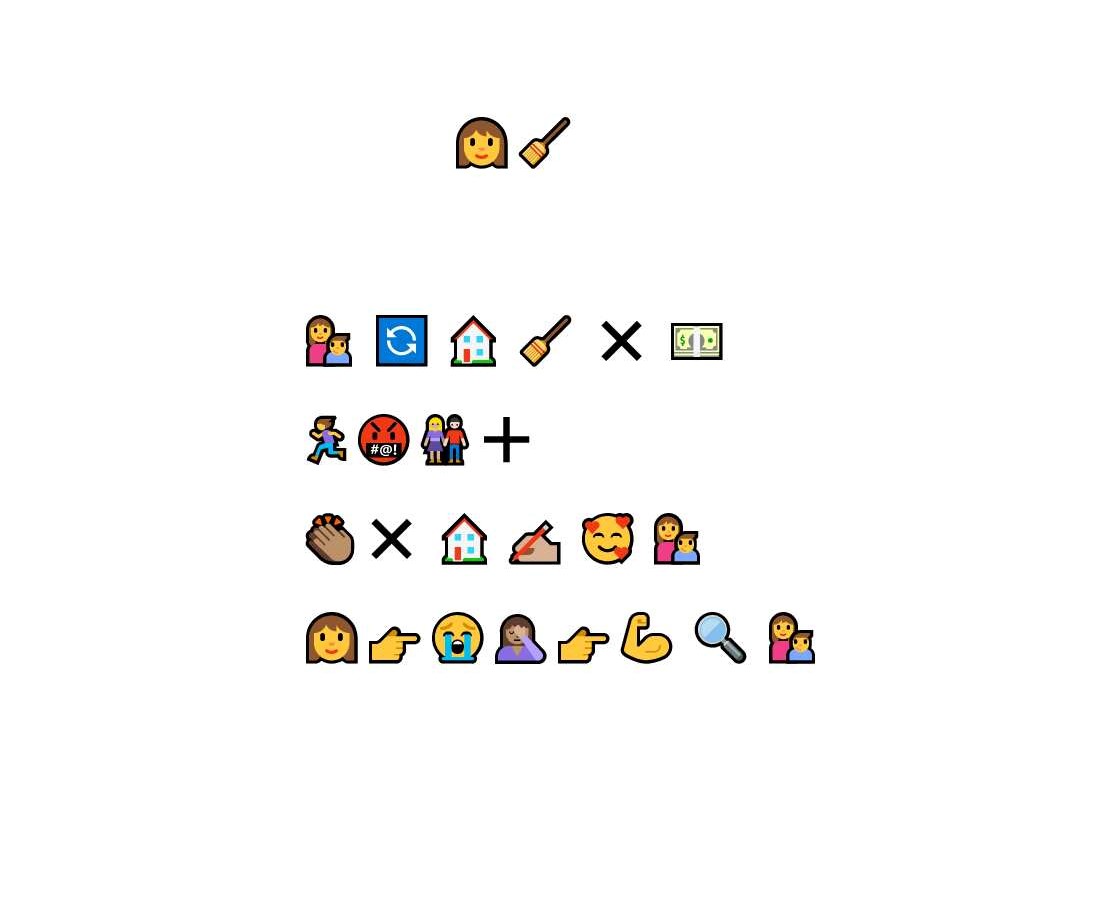Emoji Story
This is a Netflix short series that I started watching last week, I chose to focus on this because I thought it was interesting and it was the last thing, I watched that was fresh in my mind. For this task I started the title with the best emoji I thought would depict the title, using such a title I thought it would prompt readers to think.
While I was completing this interesting task a few challenges came up. First, when I wrote out the plot on paper, I realized there is no way I could find emojis to match what I am trying to say. When I transferred my interpretation to a visual representation, I realized the emojis were so few compared to the half page I wrote. My hope is that the visual representation would represent what I was trying to say. I did not choose the work based on how easy it would be to visualize. After some struggles in my endeavour, part of me wished I did!
I realize that one emoji can represent two or more words and sometimes a phrase or a sentence. Without the use of conjunctions such as ‘but’ to combine sentences it made the visual representation much shorter. For example, I tried to use an emoji to explain the words ‘who turns’, it was hard to do both so I had to focus on the word ‘turn’ with the hope that my readers will interpret it the same way I did.
Another challenging part of this assignment was including punctuation marks, where applicable I tried to start a new sentence after I used a period otherwise, it seemed like run-on sentences.
The relationship between word and image is becoming increasingly unstable, and this instability is especially apparent in various popular forms of graphic (Bolter, 2001, p.4). This was evident because it was also hard to find an emoji for the adverb “maid”, so my best visual representation was depicted in the image above. I shared my emoji story with my husband, and he did not interpret it the way I did, it will be interesting to see how others interpret my story. The interplay of the visual and interpretations has the possibility to leave readers at a loss and can be complex multimodal messages.
It is interesting how photography has evolved to electronic visual representation, from the aesthetic of black and white, to multi-colored representation in pixels, to the three second moving pictures available on phones. The development of technology, specifically graphics, makes it possible to communicate without using words, or as many words.
It is also fascinating how today’s generation are using a lot of emotion icons in expression. The shift sometimes limits our ability to construct a proper paragraph, especially in school-age children. Many adults and most elderly people would not be able to interpret some, or all messages sent by teenagers that contain emoticons. Emoticons have almost created another language, or at least a type of slang or dialect, where only the people using it regularly truly understand it. Some people would say emoticons have allowed more expression and tone to their writing. Conversely, others would suggest that emoticons confuse reading and writing due to different interpretations. The changes from the different modes of communicating (e.g. hieroglyphics, potato writing, ink pens, printing press), to codex, and changes in screen shows that cultural technologies for representation and for dissemination have become conflated—and not only in popular common-sense, so that the decline of the book has been seen as the decline of writing and vice versa (Kress, 2005, p.6).
References
Bolter, J. D. (2001). Writing space: Computers, hypertext, and the remediation of print (2nd ed.). Mahwah, N.J: Lawrence Erlbaum Associates. doi:10.4324/9781410600110
Kress (2005), Gains and losses: New forms of texts, knowledge, and learningLinks to an external site.. Computers and Composition, Vol. 2(1), 5-22.

 Follow
Follow